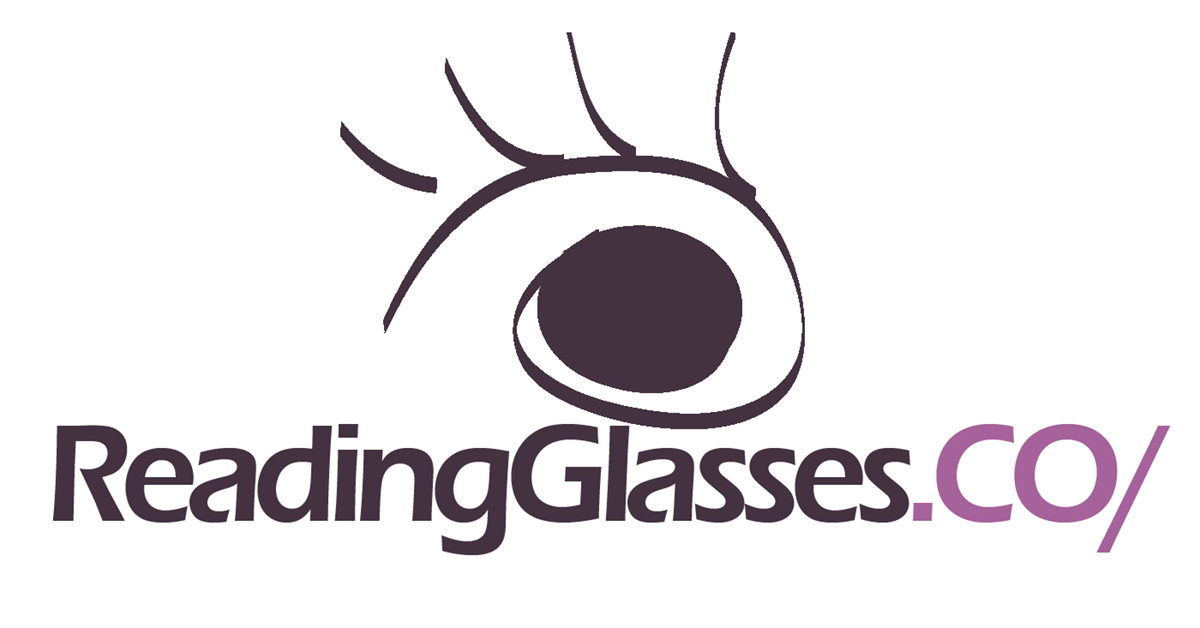Selecting and Wearing Reading Glasses — ReadingGlasses.CO/
Forget the dusty drugstore magnifiers of yesteryear. Today's reading glasses have evolved into both a stylish accessory and a crucial tool for millions navigating the nearsighted terrain of their forties and beyond.
Blame it on presbyopia, the age-related natural hardening of the eye's lens that makes focusing on close-up objects feel like deciphering ancient papyrus. But reading glasses have come to the rescue, offering a kaleidoscope of shapes, colors, and, most importantly, strengths to suit every nearsighted need. And many have been designed and specified by licensed opticians.
Gone are the days of boring brown rectangles. Today's frames are style chameleons, morphing from sleek cat-eyes to playful aviators, all the while perched atop noses with not even a hint of librarian chic. Whether you're channeling your inner hipster with tortoiseshell "playfarers" or embracing your inner with some other tortoiseshell shape (seriously, tortoiseshell is having a moment), there's a pair of readers out there waiting to become your new signature look.
But don't be fooled by the fashionable facade. The true power of reading glasses lies in their diopters, those mysterious numbers that whisper promises of clear text and headache-free reading marathons. As you age, so does your need for dioptric muscle, with the average 40-something squinting their way to a +1.00 diopter lens, while seasoned veterans in their late 50s might require a +2.25 power boost. But remember, these are just ballpark figures. Choosing the wrong strength is like trying to thread a needle with oven mitts – frustrating and ultimately futile.
muscle, with the average 40-something squinting their way to a +1.00 diopter lens, while seasoned veterans in their late 50s might require a +2.25 power boost. But remember, these are just ballpark figures. Choosing the wrong strength is like trying to thread a needle with oven mitts – frustrating and ultimately futile.
That's where your friendly neighborhood self eye test comes in. They're where you become a diopter whisperer, a vision guru who can assess your own eyes and prescribe the perfect lens power for yourself to banish blurry letters and eye strain to the land of forgotten dial-up modems. So, ditch the one-size-fits-all Walmart specials, give yourself a proper eye exam in the quiet of your own home. Your peepers (and your sanity) will thank you.
In the end, reading glasses are more than just a magnifier for aging eyes. They're a passport to a world of non-blurry books, seamless smartphone scrolling, and menus finally deciphered without the need for headlamp-level squinting. So, embrace the bifocal blues, not as a sign of surrender to Father Time, but as a stylish and empowering step into a world where nearsightedness doesn't have to mean nearsightedness.
Blame it on presbyopia, the age-related natural hardening of the eye's lens that makes focusing on close-up objects feel like deciphering ancient papyrus. But reading glasses have come to the rescue, offering a kaleidoscope of shapes, colors, and, most importantly, strengths to suit every nearsighted need. And many have been designed and specified by licensed opticians.
Gone are the days of boring brown rectangles. Today's frames are style chameleons, morphing from sleek cat-eyes to playful aviators, all the while perched atop noses with not even a hint of librarian chic. Whether you're channeling your inner hipster with tortoiseshell "playfarers" or embracing your inner with some other tortoiseshell shape (seriously, tortoiseshell is having a moment), there's a pair of readers out there waiting to become your new signature look.
But don't be fooled by the fashionable facade. The true power of reading glasses lies in their diopters, those mysterious numbers that whisper promises of clear text and headache-free reading marathons. As you age, so does your need for dioptric
 muscle, with the average 40-something squinting their way to a +1.00 diopter lens, while seasoned veterans in their late 50s might require a +2.25 power boost. But remember, these are just ballpark figures. Choosing the wrong strength is like trying to thread a needle with oven mitts – frustrating and ultimately futile.
muscle, with the average 40-something squinting their way to a +1.00 diopter lens, while seasoned veterans in their late 50s might require a +2.25 power boost. But remember, these are just ballpark figures. Choosing the wrong strength is like trying to thread a needle with oven mitts – frustrating and ultimately futile.That's where your friendly neighborhood self eye test comes in. They're where you become a diopter whisperer, a vision guru who can assess your own eyes and prescribe the perfect lens power for yourself to banish blurry letters and eye strain to the land of forgotten dial-up modems. So, ditch the one-size-fits-all Walmart specials, give yourself a proper eye exam in the quiet of your own home. Your peepers (and your sanity) will thank you.
In the end, reading glasses are more than just a magnifier for aging eyes. They're a passport to a world of non-blurry books, seamless smartphone scrolling, and menus finally deciphered without the need for headlamp-level squinting. So, embrace the bifocal blues, not as a sign of surrender to Father Time, but as a stylish and empowering step into a world where nearsightedness doesn't have to mean nearsightedness.
